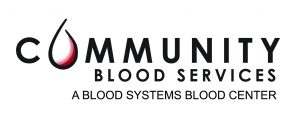Did you Know?
- Red Blood Cells have a shelf life of about 35 days.
- Each blood donation is tested for HIV, Hepatitis B & C, Syphilis, West Nile Virus and other infectious agents.
- Testing requires 24 hours.
- Every 2.5 seconds someone needs blood, a friend, a family member or maybe even you.
- Less than 5% of the population donates blood, yet 80% of the population needs blood.
- Nearly 4 million Americans would die each year without life-saving blood transfusions.
- An estimated 109,500 Americans will be diagnosed with leukemia, lymphoma and myeloma this year.
| A bone marrow recipient needs up to 20 units of red blood cells and 120 units of platelets. |
An automobile accident victim needs up to 50 units of red blood cells. |
| A sickle cell anemia patient needs up to 14 units or red blood cells per treatment. |
A cancer patient needs up to 8 units of platelets per week. |
| A heart surgery patient needs up to 6 units of red blood cells and 6 units of platelets. |
An organ transplant recipient needs 30 units of platelets and 25 units of plasma. |
The need for blood is constant and critical. We have all come to expect that if we or our loved ones need blood in an emergency situation it will be available but that may not be the case. Our aging population continues to need more transfusions, and new advances in medicine and an increase in the number of people diagnosed with cancer have increased the use of life-saving blood. At the same time, the number of donors is decreasing as a result of new FDA restrictions, mad cow disease, West Nile Virus and SARS. New Jersey and New York State must import thousands of units of blood from other parts of the country in order to meet their patients’ needs.
Click here to go to our Frequently Asked Questions about donating blood.


